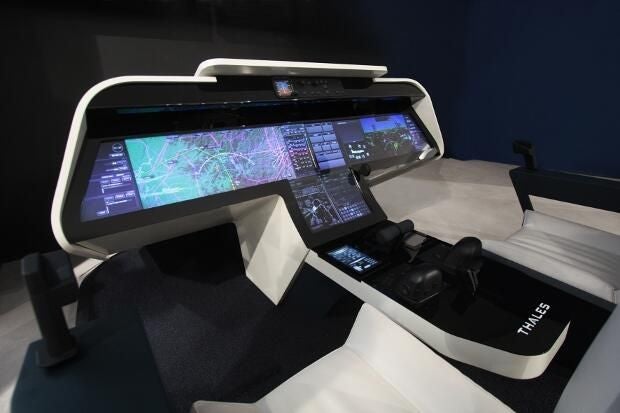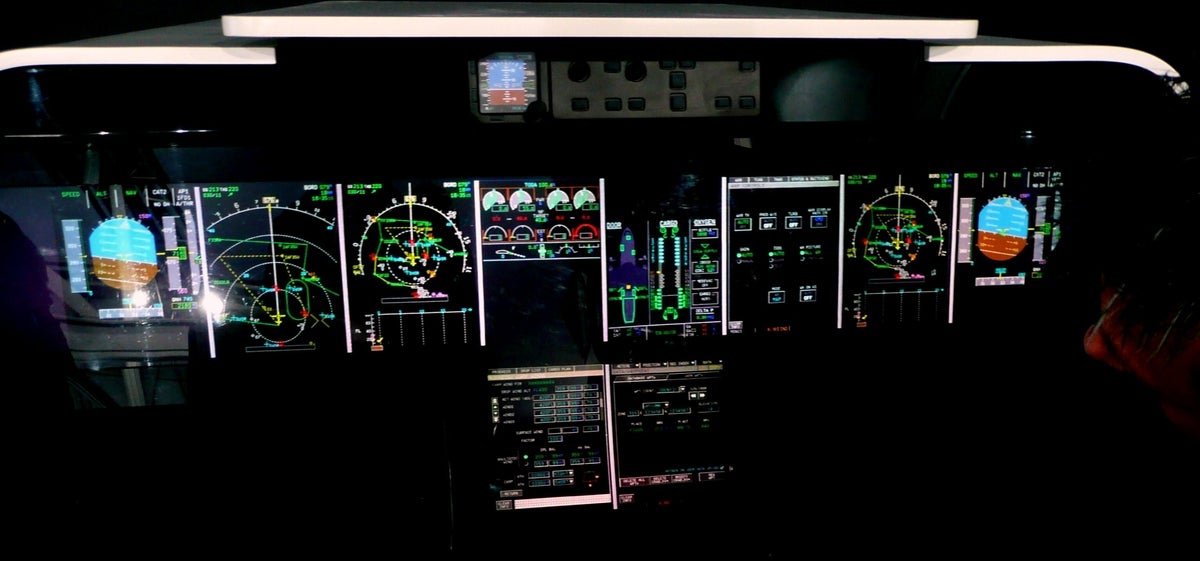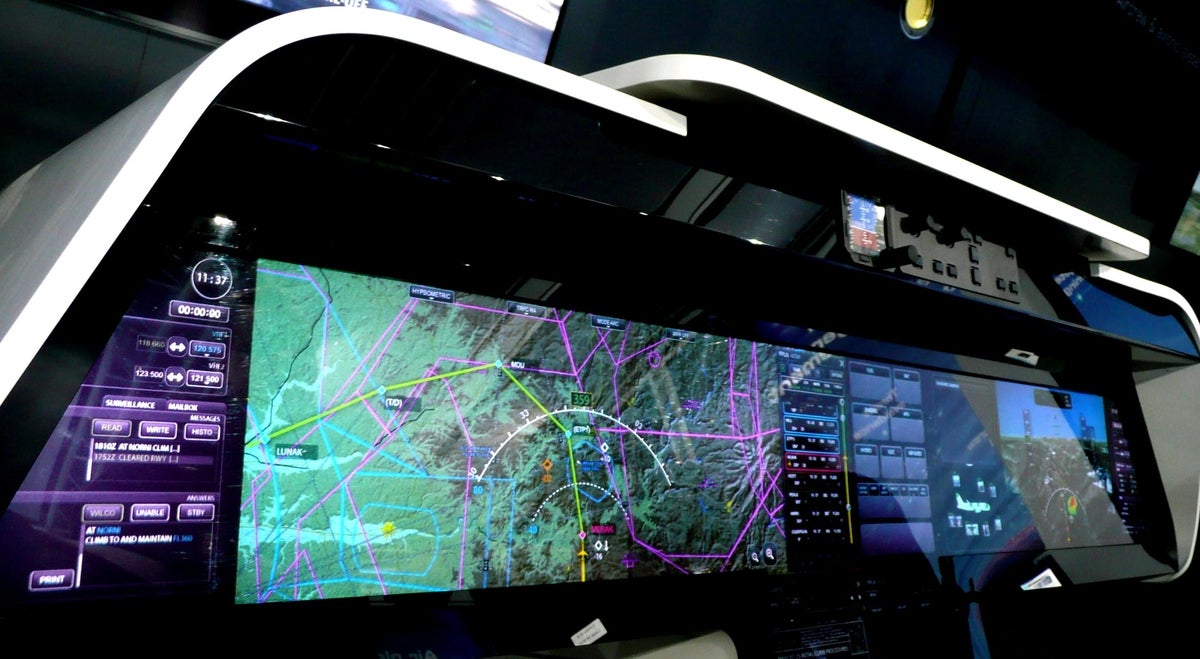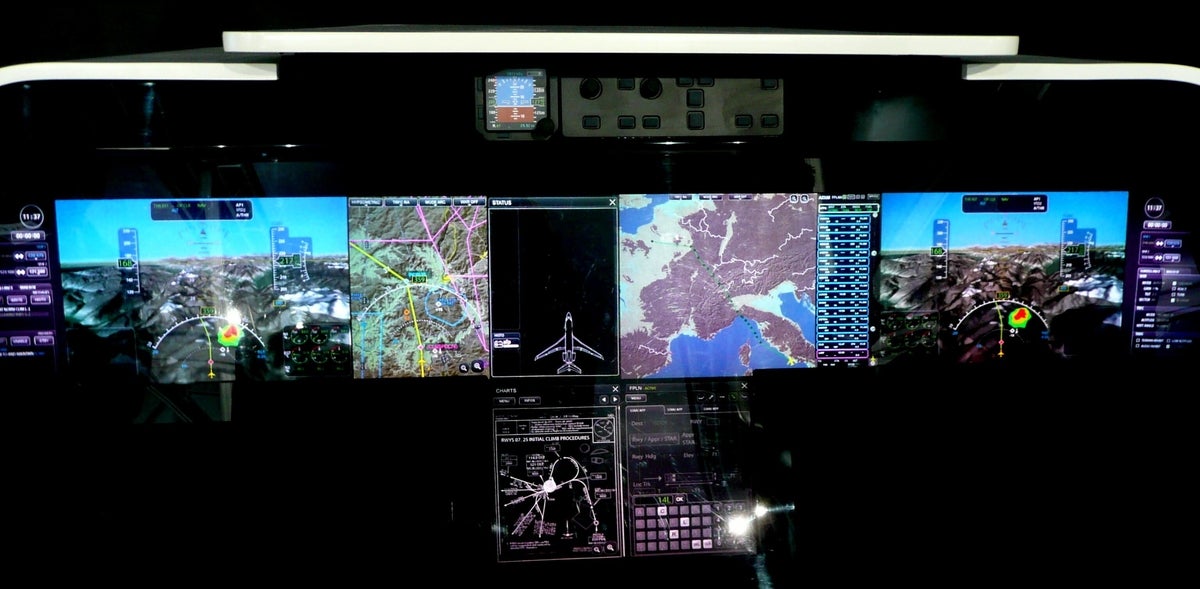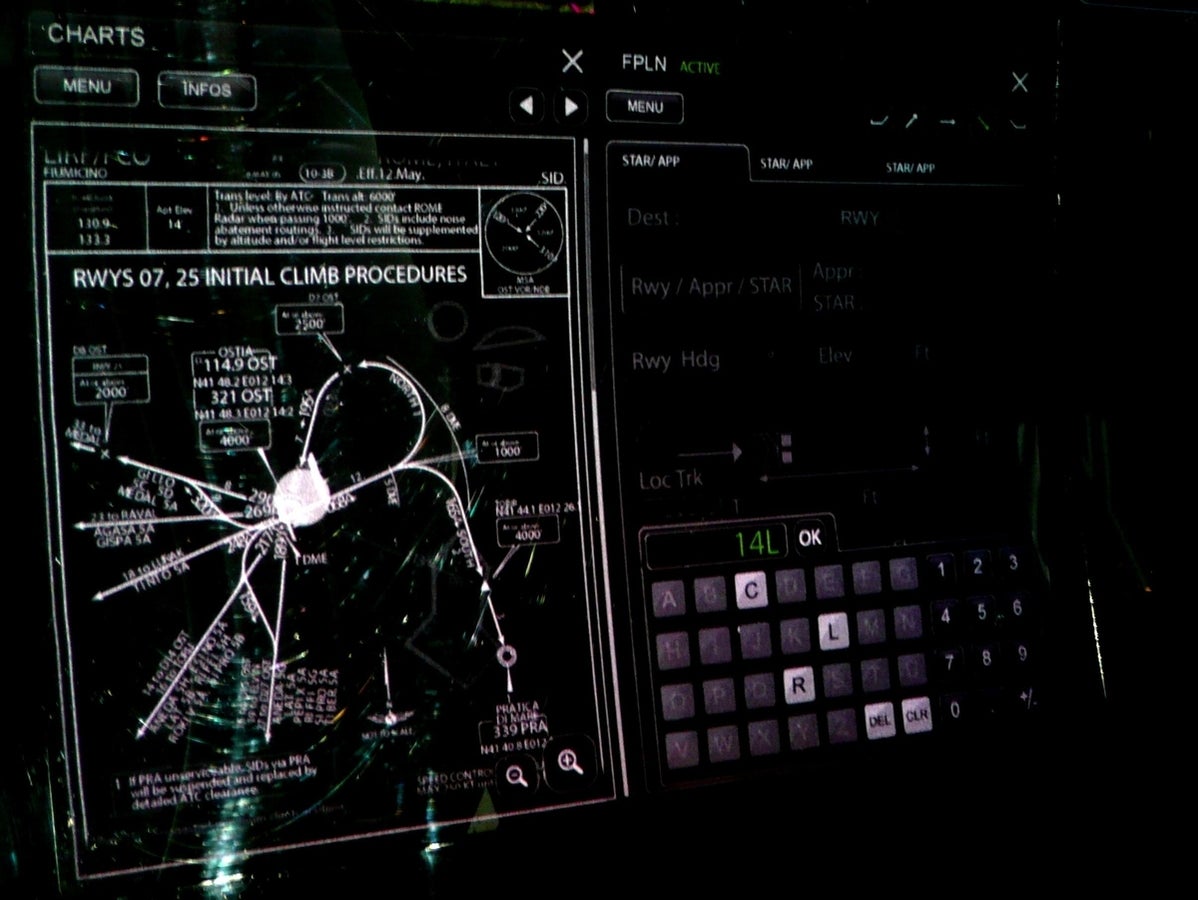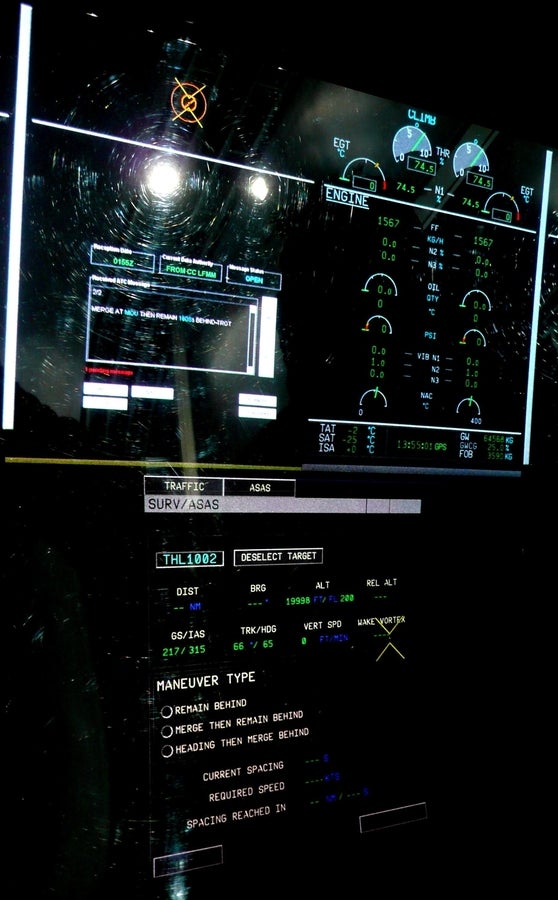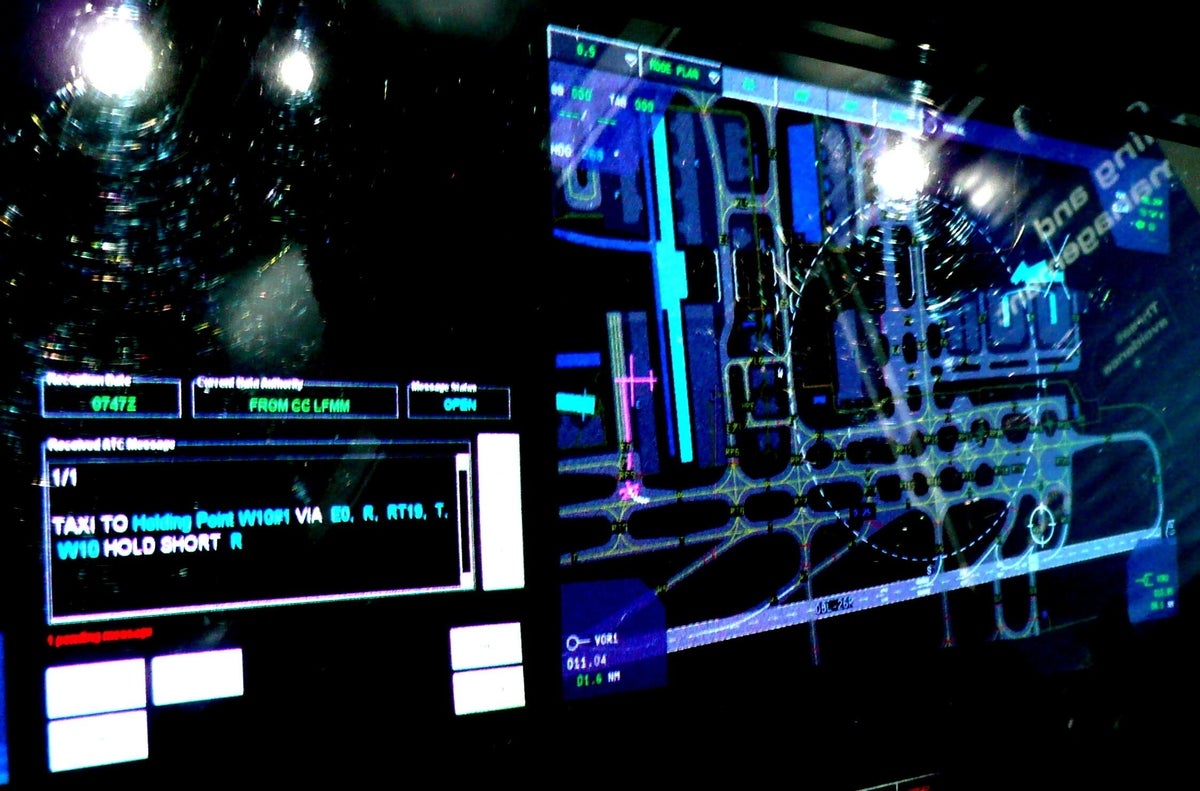Inside the touchscreen cockpit of the future
Image 1 of 7
Touchscreen cockpit of the future
ntBy 2030, enormous touchscreens will dominate aircraft cockpits – if one research group’s vision of the future of aviation comes true.
n
ntThis concept cockpit is a single touchscreen dashboard known as One Display for a Cockpit Interactive Solution (ODICIS).
n
ntThis concept, on display at the Farnborough International Airshow this week, has been developed by a consortium of European companies and universities, led by French aerospace and defence firm Thales.
n
ntThe system is able to reconfigure itself to show the information most relevant to the pilot at any given moment.
n
ntFor instance, when the plane is taking off and landing, the pilot needs to know the status of the aircraft’s slats and flaps. However for the rest of the flight this information is generally not useful, so the system can be configured to remove that data automatically when it is not needed.
Touchscreen cockpit flags up key data
ntToday, cockpits have several small screens, rather than the single large display of ODICIS.
n
ntHaving a single display puts fewer constraints on the system in how it presents information. With ODICIS, data, images, charts and maps can take up as much space as needed, depending on what is most important to the pilot at any particular moment.
n
ntIt can also fit information into irregular shaped panels such as the triangular ends of the display.
Cockpit display with multitouch support
ntPilots would be able to use ODICIS to call up the mix of primary flight displays, navigation displays and other information they need. The display’s multitouch interface will also allow pilots to use gestures such as drag or pinch to interact with the information.
n
ntThe reconfigurable nature of the system means it could be set up to work in a variety of aircraft, from commercial airliners to military helicopters.
Aircraft synthetic vision system
ntThis picture shows how aircraft could use ODICIS to provide pilots with richer information about atmospheric conditions and the terrain they’re overflying.
n
ntThe display on the right shows an image constructed from information about the topology of the terrain and readings taken by onboard instruments, about environmental factors such as the weather. It uses Thales Synthetic Vision System and Enhanced Vision System.
Multiple LCD projectors
ntThe system processes the image on this curved screen at the base of ODICIS so it is as easy to read as if it were a flat screen.
n
ntThe ODICIS on display at Farnborough uses five LCD projectors but Thales has estimated that a commercial system would probably need at least 10 projectors to provide redundancy.
Airborne Separation Assistance Systems
ntThe display shows the Airborne Separation Assistance Systems, which compute and adjust the aircraft’s speed so it can maintain the correct distance from other planes and help the pilot follow air traffic controller instructions.
Aircraft sat-nav
ntThis Digital Taxi service could be described as a sat-nav for aircraft.
n
ntTaxing round airports, particularly large ones such as Charles de Gaulle in Paris, can be particularly tricky as pilots often have to rely on signs to find their way.
n
ntDigital Taxi sends pilots an electronic message telling them where they need to go and which route to take. It then uses GPS and other data to plot the route on a map for pilots from their current position to their designated airport stand.
-
Account Information
Contact Nick Heath
- |
- See all of Nick's content
